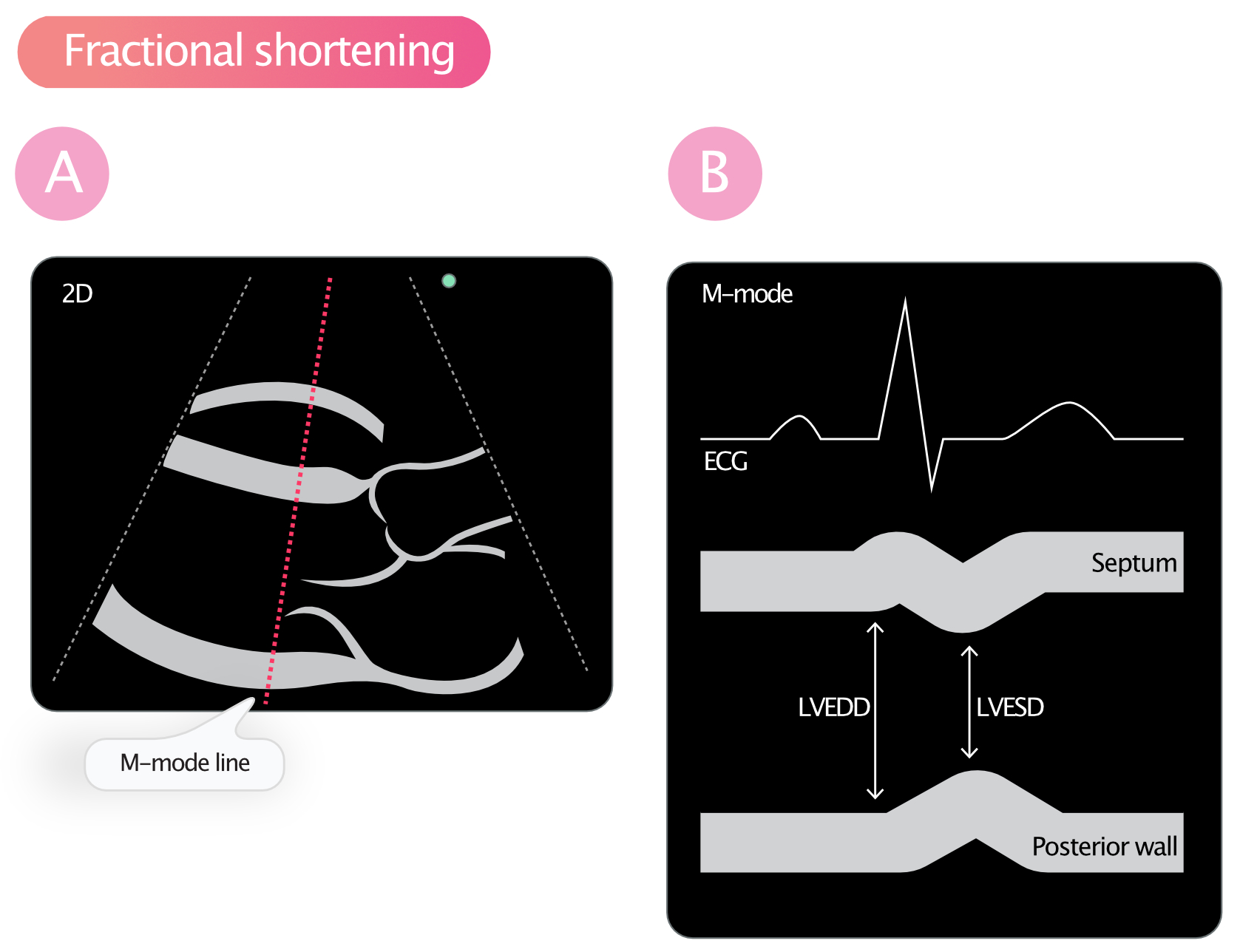

Run the Echocardiography Online Simulator.While this is a single line of sight scans, a lot of information about the left ventricular function, mitral valve function and aortic valve function can be obtained via M-Mode.What about a little bit of theory before beginning the simulation? >

An M-Mode scan can be done across the middle of the left ventricle, at the level of the mitral valve, or at the level of the aortic valve. The left parasternal axis view shows the left ventricle, mitral valve, and aortic valve. A relative wall thickness > 0.8 indicates an inappropriately hypertrophied ventricle compared to the systolic pressure needed to generate a stroke volume. Patients with concentric remodeling or concentric hypertrophy have higher incidence of cardiovascular events when compared to patients with normal relative wall thickness (normal or eccentric hypertrophy). The last state is a normal LV mass and normal relative wall thickness. In hypertensive disease the patients can be classified or subdivided based upon the response of the heart.Ĭoncentric hypertrophy is an increase in LV mass and relative wall thickness.Įccentric hypertrophy is an increase in LV mass but normal relative wall thickness.Ĭoncentric remodeling occurs when normal LV mass is present but increased relative wall thickness. Relative wall thickness increases in direct response to systolic pressure. Note: The Teicholz method is not used since more accurate methods (by 2D or 3D) are available. The formula can be used in systole or diastole to arrive at a stroke volume that is fairly accurate when compared to other methods. Teicholz et al published a formula that compensates for the remodeling of the left ventricle using only the LVSAX in a spherical heart. Overestimation of left ventricular volumes occurs in disease states such as a dilated cardiomyopathy or chronic valvular regurgitation. If the LVID dimension is measured, the volume of the left ventricle can be calculated from the volume formula of a sphere: 2D echocardiography is utilized to obtain and inspect the correct view before switching to M Mode to obtain the measurements. Since wall thickness is being measured, the interventricular septum and the posterior wall must not have regional wall motion abnormalities. The beam must be perpendicular to the interventricular septum and the posterior wall. The 2D view of the LVSAX is obtained and the M-Mode scan line should be just below the mitral valve leaflet tips. The correct beam angle for M Mode calculations can be obtained via the parasternal SAX view. Since the calculation will overestimate the LV mass by 20%, a correction factor, 0.8, is used to arrive at the true LV mass.

Left Ventricular Internal Diameter in Diastole ( LVSIDd).The measurements required for the calculation of LV mass are the: The formula for left ventricular mass by the prolate ellipsoid method is: A correction factor, 0.8 is needed to calculate the final value for left ventricular volume. If the volume of the whole left ventricle can be calculated as the outer prolate ellipsis and the endocardial or blood volume of the left ventricle can be calculated, the difference is the left ventricular volume. To find the mass of the left ventricle, the volume of the left ventricular muscle must be calculated and then multiplied by its specific gravity, 1.04. The normal left ventricle is a prolate ellipsoid. For example, patients with idiopathic dilating cardiomyopathy have a poorer survival rate if their ventricle remodels to a more spherical model where the LAX and the SAX are similar.Ī prolate ellipsis is an ellipsis with a LAX/SAX ratio of 2:1. The measurements of the left ventricle can be predictive in certain disease states. Left ventricular measurements that characterize the remodeling are relative wall thickness ( RWT), short axis ( SAX), long axis ( LAX), volume ( V), mass ( M), and the volume/mass ( V/M) ratio. The mass, volume, and/or geometry of the left ventricle may change. In response to valvular disorders, hypertension, heart failure the left ventricle undergoes remodeling. Left Ventricular Volume, Mass and Geometry Despite these limitations, M-Mode is accurate in the majority of cases and is a standard measurement in TTE. M-Mode as a single line of sight so it does not account for changes in the heart in other areas besides it's single ultrasound beam. M-Mode provides a quick assessment of multiple values of wall thickness, chamber diameters, ejection fraction, severity of aortic insufficiency, and more.


 0 kommentar(er)
0 kommentar(er)
